Choosing a robot vacuum cleaner has become a headache for many people.
From those few expensive, and not very effective, devices that existed not many years ago, we have now had a wide variety of robots, from various brands, that perform their task with high effectiveness, achieving great cleaning performance and providing great comfort to its users.
Robot vacuum cleaners have become a very common household appliance in Spanish homes in recent years, but now a difficult question must be resolved: Which one to choose? Which one is best for me? Which robot best suits my needs and wants (or my pocketbook)?
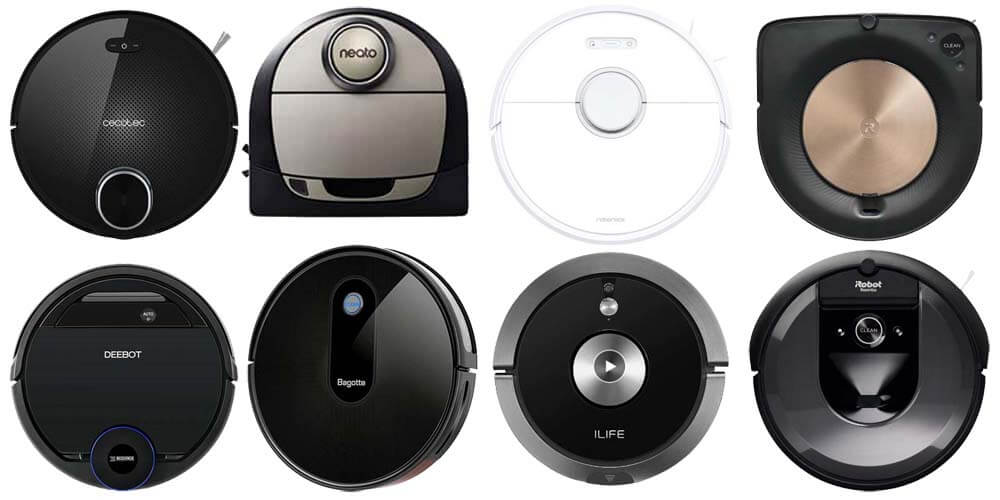
Nowadays, appliances such as washing machines or dishwashers are widely used, and robot vacuum cleaners are going the same way. Who can resist the comfort and hygiene of finding a clean home, without having to do practically anything?
Who is this guide for?
We usually receive queries requesting advice or help when choosing one robot or another. Many people are convinced of buying a robot, but they do not know which one to choose, due to the wide selection that exists on the market.
In our buying guides you can find several articles in which we compare some models, such as our duel of the titans, the comparison of the best selling robots or one especially dedicated to cheap robots. And one of the selection criteria, logically, is the price we are willing to pay, but it is not the only variable.
We have created this complete guide to try to explain in detail all those relevant sections when buying a robot; This way you will know what features to look for, depending on your needs and desires.
Throughout 20 sections, we are going to detail how some robots differ from others, so that you can be clearer about what to look for in a device of this type.; Thus, when you choose a specific model, it will correspond exactly to what you need.
As always, if you miss any issue, have any questions or simply want to tell us something, you can do so through the comments at the end of the article.
We know it's a bit long, but we aspire (pun intended!) to make it the most complete guide on the web. If you wish, You can use the index to go to any of the sections directly.
Table of contents (click to show/hide)
Or you can also go to the end, to see a summary of some of the robots that are mentioned in relation to the sections discussed throughout the review.
1. Robot price
One of the first things to know is the price you are willing to pay. Obviously, a 100 euro robot is not the same as a 600 euro robot, although it is also true that A higher price does not always mean having a better robot, or having better features.. Sometimes, it may depend on the positioning of the brand, the quality of the product or the offers that may be available.
In any case, each person usually has an approximate price range in which to move, or which they would be willing to reach in certain circumstances.
Therefore, The price, more than a characteristic that serves to choose a specific robot, serves to define an interval in which we will move. For example, in our comparison of the 30 best-selling robots, we have established three intervals: less than 250 euros, between 250 and 500 euros, and more than 500 euros. Curiously, in some cases it is possible to find robots with more features at more affordable prices, and in fact, for example in the range between 250 and 500 there are some of the best robots on the market.
In addition to the limitation that the price represents, when buying a robot vacuum cleaner we will also look at the quality-price and/or performance-price ratio: in short, it is about maximizing what we get for what we pay, that is, getting the best possible robot for the price we are willing to pay..
2. Sensors and navigation system
One of the main features to take into account when choosing a robot vacuum cleaner is its navigation system. There is a fairly high correlation between the type of navigation system and the range in which the robot is located: Simplifying greatly, we would say that low-end robots have a random navigation system, mid-range robots have ordered, methodical movements, and high-end robots have precise navigation; Within this last section, we will even make one more subdivision, depending on the technology used.
Also important is the software that the robot has, which converts the information it obtains from its environment into movement.
The most sophisticated robots have powerful processors, capable of interpreting data quickly and efficiently, providing more precise and fluid movements. Additionally, their software is usually upgradeable, so that you can always count on corrections and improvements that may arise.
For example, the Roborock S6 Pure has incorporated various improvements in its software, which allow it to be up to 20% more efficient than its predecessor, so that it completes the cleaning in less time.
As for the sensors, Today almost all robots on the market have anti-fall sensors (to avoid, for example, falling down stairs) and different collision sensors, to avoid collisions. Some robots have other types of sensors, such as gyroscopes (to measure angular velocity), odometers (to measure linear velocity), acoustic, optical, infrared or laser sensors.
Next, we tell you in depth what each of the three basic navigation systems consists of:
a) Random navigation
Also sometimes called real-time navigation. The robot decides as it moves, and depending on what it finds, where to go; It has no memory. It is common in low-end robots. Apparently, the robot moves randomly, combining straight movements with diagonal movements and skirting furniture legs and corners, in no particular order.
This chaotic movement, although it is not very efficient (since it can pass through the same place many times) ends up being more or less effective, since the robot, by moving, covers most of the surface to be cleaned.
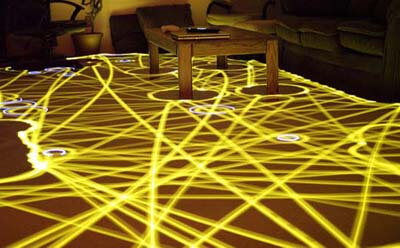
Sometimes it can be combined with an infrared system, which allows the robot to move with a little more intelligence..
The effectiveness of the random navigation system also depends on how well designed the robot software isTo put it simply, a low-medium range Roomba is more effective than some cheap models from other brands, even though they all have random navigation.
In this group we find such interesting robots as, for example, the highly valued Bagotte BG600, the Conga Quick & Clean or an excellent new generation robot like the Roomba E6.
b) Ordered navigation using a gyroscope
One of the novelties that has emerged in recent times, and that provides a quite good result, it is the orderly navigation, based on gyroscope.
The gyroscope is a kind of digital compass, which allows the robot to know in which direction it is moving and how many degrees it has turned. Combining this information with the distance it travels, Robots with a gyroscopic system are capable of drawing a map of the home, so that they will navigate through it by drawing large straight lines and almost completely covering the surface to be cleaned.
This technology has become an interesting alternative in low-medium range robots, providing the ability to clean virtually the entire home at a very affordable price, which can be around 150-200 euros, depending on the models and the offers there may be.
In this group there are robots with great performance and high efficiency, such as the Ikohs Netbot S15, Conga 2290 or Robo Rock E4.
c) Mapping through camera
A few years ago, vSLAM (Video Simultaneous Localization and Mapping) technology was developed for home mapping.
In a similar way to autonomous vehicles, some robots were equipped with a camera that “visualized” the home and, through an advanced processing system, converted these images into a plan of the house.. This technology is still used by high-end Roombas, such as the Roomba 966 and Roomba i7, or by the Dyson 360 Heurist.
The technique has been perfected, with better cameras, 360º visualization, greater processing capacity, etc., in addition to the joint use of other sensors, to achieve an increasingly better result.
However, This technology is not as precise as laser-based technology, and has certain problems in dark or low-light environments. (since it uses a camera to “see”). In addition, some people consider it more intrusive, since there is still a camera in our home.
d) Laser mapping
Robots equipped with this system achieve the most precise mapping of the home. Not by chance, lasers have been used for years to measure in areas where accuracy is important.: architecture and engineering, construction, topography, medicine, ballistics or even sports, are fields in which lasers are commonly used, due to the precision it provides.
In the case of robot vacuum cleaners, they incorporate an easily identifiable turret (a circle several centimeters in diameter, which protrudes from the robot), which rotates 360º, projecting the laser beam in all directions. This light bounces towards the turret, which allows the robot to accurately calculate distances and build a precise map of the environment.
Robots like Conga 9090, Roborock S7 + or Deebot T9 + They are excellent representatives of this technological range.
3. Suction power
Another determining aspect when choosing a robot is suction power. As always when we talk about a vacuum cleaner, You have to look at the suction power (which will normally be expressed in Pascals), and not at the nominal power of the device., what it will tell us is the consumption (normally, indicated in watts).
While it is true that today, unlike what happened a few years ago, Most of the robot vacuum cleaners on the market have sufficient power, it is also true that there are notable differences, even on robots with similar price ranges. The most expensive are not always the most powerful.
Here we must make a point. Suction power is not the only element to take into account when determining the effectiveness of a robot in cleaning., since there are other important aspects (such as brushes), but it is also clear that a robot with 2.000 Pascals of power is superior to one that only has 1.000.
To achieve a more or less good result, we should start with robots that reach at least 1.000 Pascals.; those around 1.400-1.500 already achieve a great result (such as, for example, the Conga 1190, Ikohs Netbot S14 or the Bagotte BG600), and those that exceed this figure (such as the Xiaomi/Roborock, the Conga 3090 or the high-end Roomba) obtain fantastic results, which largely avoid the need to use another type of vacuum cleaner to clean our floors.
It must also be indicated that Some robots have a single power level, while others have several., which allows greater versatility when cleaning.
Moreover, Some robots include a system that automatically maximizes power when they detect that they are on a carpet, to achieve maximum effectiveness on this type of surface, like most of those that have laser navigation or, for example, the roomba s9.
4. Types of soil
It is interesting to take into account the type of floors that the robot will have to clean.. Do we have rugs? Are they thick or thin? Parquet floors that we would like to make shine? Only hard tile or porcelain floors?
Depending on these variables, we may prefer to opt for buying a robot capable of climbing obstacles of up to two centimeters, if we have thick carpets (such as, for example, the Roborock S6), or it is enough for us to have one who specializes in hard floors, such as Rowenta Smart Force Essential, if not the case. If we want to have shiny wood, we may opt for a model with a mop, but if not, we may consider it unnecessary.
5. Pets
One of the most common questions we get is whether or not a certain robot is suitable for pets. The vast majority of robots have no problem collecting hair, so any of them represent a good help in homes with animals., where there is usually hair everywhere as soon as one gets lost. However, of course, it is also true that some are more suitable than others.
When the robot has a certain power (from about 1.400 Pascals) it is very interesting in this sense, since it catches everything efficiently..
In addition to this, There are robots that have a special brush for pets, which largely prevents hair tangles, making them especially effective in homes with animals. Roombas with AeroForce brushes, such as, for example, the Roomba E6, are also interesting in this aspect.

On the other hand, here There is a third variant, made up of a few models that opt for the absence of the central brushand Deebot Ozmo Slim 10 or the Conga series 950; Instead, they have an opening at the bottom, surrounded by a silicone rubber, through which they collect dirt and hair; In this way, tangles are avoided, being a very interesting solution in these cases.

Conga 950 below
6. Filtering system
The filtering system is also important; Normally it will be EPA or HEPA (H is for High, HEPA with H is more effective), although there are different degrees within each of these (you can visit our guide to HEPA filters for more information).
As a guide, EPAs will typically be EPA 11 (95% effective at trapping dust mites and microparticles) or EPA 12 (99,5%), while HEPAs are filters that achieve 99,95% efficiency or higher. .
If you have animals and/or any respiratory or allergy problems, we recommend that you opt for those that have a HEPA filtration system, such as the Conga 3090, For example.

7. Brushes
side brushes
The brushes are another element that differentiates some robots from others. As for the side brushes, which are the ones that trap dirt inward, especially on edges and corners, there are robots that have two and others that only have one.
Many users believe that robots that have two side brushes are more effective., since this way they will capture dust more easily. However, curiously, high-end robots usually only have one. Because?
Robots with a certain level have sufficient power to effectively suck dust, dirt or particles of a certain size.
In addition, They know where their side brush is located and they have a more or less sophisticated navigation system, so that they “are aware” of where they clean.. Therefore, the side brush is mainly used to collect dirt in corners and corners.
By contrast, If the robot is cheap and has a limited navigation system, it may be interesting to have two side brushes.
The side brushes are usually made of synthetic or silicone bristles, and usually have three blades, although recently some models with 5 blades have been released, such as the Roborock S6 or the Roomba S9.
Finally, review that In some cases, the brushes are assembled and disassembled by pressure, while there are models in which they are screwed.
Central brush
The central brush of robots is usually, in many cases, a combination of bristles and silicone, which improves on old bristle brushes.
However, the high-end Roomba and the new generation stand out, like the E5, for his Double AeroForce rubber brush, which effectively traps dirt, greatly preventing tangles. Some brands, such as Conga, in its 1090 model, opts for two interchangeable brushes: one, the usual one, and another silicone, especially for pets.
The central brush is usually rotating, contributing to good cleaning of the home, especially on rugs and carpets., where it helps to go deeper.
However, on carpets with very long pile, they can cause tangling problems, so it may be necessary to remove it, or opt for another option, robots without a central brush.
8. Dimensions and shape of the robot
Dimensions
The size of the robot is an aspect that is often not taken into account, but to which you must dedicate some time, even if it is minimal. Some users complain, once they have purchased the robot, that it is not able to pass between the legs of some furniture or under some element. Therefore, it is important to consider it beforehand.
The diameter of the robots is usually between 30 and 35 centimeters (although it is also possible to find a smaller robot, such as the Deebot Mini or the Diabea D500 Pro), And the height is usually between 7 and 10 centimeters (as we have already mentioned, robots with laser navigation are usually the tallest, due to the turret they have), although here it is also possible to find some finer ones, such as the Deebot Ozmo Slim 10, below 6 centimeters.

Deebot Ozmo Slim 10, less than 6 cm high
Forma
Most robots are round. Although this is the usual way, there are some brands that offer other interesting alternatives..
Round vacuum cleaners may have some difficulty when cleaning corners and corners if the length of the side brush is not enough to reach those areas.
Therefore, one of the options is the one that has chosen LG, through its HomBot robots, which have a more square shape (such as, for example, the VR8602RR). In this way, they achieve effectiveness in corners and corners of up to 96%.
Another option is what D-shaped robots represent, that is, one side is curved but the other is flat.. In this way, the robot can get perfectly close to corners and corners, doing a great job in those areas.
The main representative of this design is the American manufacturer Neato, a brand of high quality and high performance., not excessively well-known in Spain, but in the United States it is Roomba's main rival (in addition to having certain parallels in their origins). Devices like the Neato Botvac D7 or the D6 are some of the best options on the market today.
Also another robot that we mention in this review, the Dibea D500 Pro, is D-shaped, and the latest Roomba launch, the S9, has also opted for this design., to try to improve cleaning in these more complicated areas.


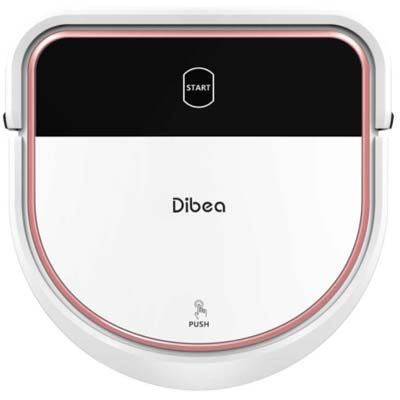
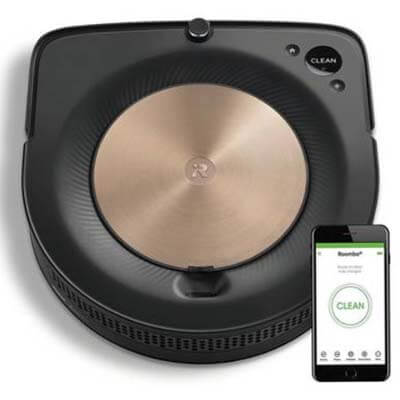
9. Functions
Basic functions
There are a series of basic functions that almost all robots on the market have. Virtually all of them have an automatic cleaning system, for which you simply have to press a button, usually on the top, and the robot will clean the home.
The vast majority also have the occasional cleaning function., which normally consists of the robot rotating in a spiral around a point, and which can be very interesting in the event that we have dropped something and it has scattered.
Another very common function is the edge mode, in which the robot will edge walls, corners and furniture legs., and which is very useful for cleaning the dirt that usually accumulates in those areas.
It is also normal for robots to return to their base by themselves when they detect that they have a low battery., and they usually have a button so that we can give it the order to go to the base whenever we want.
Programming Languages
The programming function is another of the most common; At first, it was more typical of medium and high ranges, but today there are a large number of cheap robots that also include it.
The schedule can be simple (for example, clean every day at a certain time) or more complex (that we can choose different times, some days yes and others not, or even clean some areas one day and other areas another).
In any case, Programming is a function that provides great convenience, since we don't worry about having to put the robot to work, and in addition, it can clean when we are not at home, avoiding any type of inconvenience.
From here on, there is a great variety of functions that some robots have and others do not, so each one will have to analyze to what extent they are interesting to them.
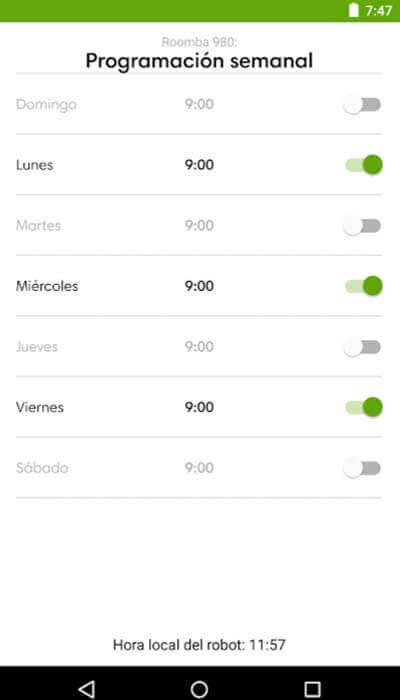
Mopping and scrubbing
One of the most common is mopping and scrubbing, so We could classify robot vacuum cleaners by dividing them into those that only vacuum, and those that also mop and scrub..
Many users don't need or want this feature, so they can opt for a robot that doesn't include it and save a little; definitely, If you are not going to use it, you should opt for an alternative without mopping and scrubbing. However, we will tell you a little more detail about how multifunction robots work and what advantages they provide, in case you are interested.
Within robots with a scrubbing function, there are many variants. From those that simply wipe the floor with a damp mop to those that have a more sophisticated system., with which they simulate human movement when scrubbing, such as Conga 6090, with its advanced Scrubbing system, or the iLife A9s.
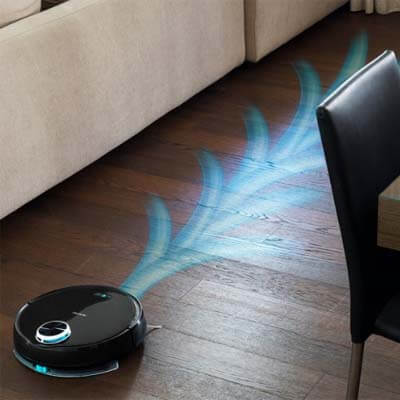
The soaking of the mop itself can be by decantation (the water falls from the tank due to the effect of gravity) or through other more sophisticated systems (electric or electronic valves), which allow for better dosing of water.
There are also robots, like some Conga (for example, the Conga 1290), which allow us to dose the water to our liking, for those cases in which the floor is more or less clean, or dirtier, or depending on the type of floor, simply choosing the scrubbing level, from 1 to 3.
Another aspect that varies from one robot to another is that Some allow simultaneous scrubbing and vacuuming, that is, they vacuum and scrub at the same time., while others perform one function or the other, but not both simultaneously.
As for the mop, it should be noted that they are usually washable, even in the washing machine, and can normally be used dry, without filling the water tank.
Thus, It is an element that can help us trap dust more effectively.. In some cases, the mop is made of two materials, to achieve greater effectiveness.
Additionally, If we lightly moisten the mop with a floor spray, our parquet will look impressive.

Detail of a 2-material mop
10. Manageability and configuration possibilities
Although this section is closely related to the previous one, in that it largely refers to the different possibilities that the robot offers us, we have preferred to show it separately, to review the different options that the robot can have when it comes to managing it and configuring the cleaning of our home exactly as we want.
Remote control
Almost all devices have a button on the top to start it. Besides, Some robots include a remote control, from which it can be operated comfortably, in addition to accessing other functions that cannot be operated from the robot itself.
For example, there are robots that have room cleaning (the robot will clean a room for a period of time, for example, 20 minutes, or half an hour, and then it will stop, or go to base if it is in that room) , area or zone cleaning, deep cleaning mode, etc., which can be activated from the remote control.
App
Another alternative to operate the robot, typical of high-end robots, although it is also beginning to become widespread in mid-range robots, is management through an application.
This option, which we will discuss in depth in the next section, It allows great comfort and versatility, since we can control our robot from anywhere and at any time, in addition to accessing a multitude of functionalities.. On the negative side, you must have an Internet connection to do so, and there are people who do not like having a device in their home connected to the Internet.
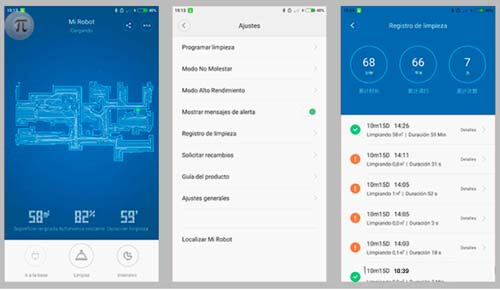
Voice commands
Another function that is being incorporated into some robots is the possibility of controlling them using voice commands, through assistants such as Alexa or Google Home.. Thanks to this option, you can give some simple commands to the robot, so that it starts cleaning or goes to the base, for example. Appliances like the affordable and complete Netbot S15 incorporate this functionality.
Restricted areas
One of the most common needs is to limit the robot's access to a certain area. For this, there are various possibilities.
There are robots that have a magnetic strip (such as, for example, the excellently rated Bagotte BG600), which would be placed on the ground, and would act as a barrier so that the robot does not pass through there; It has the disadvantage that the band is normally going to be seen and can be annoying.
In other cases, virtual barriers are used, such as the famous Virtual Wall Dual and Virtual Wall Halo. of some Roomba models, which creates a barrier using infrared.
And finally, the most advanced, in which restricted areas can be delimited using the app, such as the Conga 3090, the Xiaomi Vacuum 2 or the Roborock S6, which allows you to configure exactly and at any time, comfortably, the places where we do not want the robot to pass.

Area to clean
This would be the opposite option to the previous one, It is an area that we specifically want to clean. In the simplest versions, there are robots that have a predetermined area cleaning, so that they will clean the area around the point where they are activated, with a size of 1-2 meters in each direction.
In the most sophisticated devices, again through the app we can establish which areas we want to clean on the home map that appears on our mobile screen.
Room cleaning
Some high-end robots include an even more convenient and simple function. Devices like the Roomba i7, Roomba S9 or Roborock S6 They have room cleaning, which works as follows:
When the robot creates the map of the home, it establishes which rooms make it up, which can be edited. In some models, we can even change the name of the rooms created.
Once defined, we can tell it to clean one or more rooms (or the entire house, logically), or even schedule cleaning by room.

11. Connectivity and management via app
There are more and more robots that are manageable through a mobile application. What started out as a high-end feature has spread and there are now robots for less than 200 euros that can be controlled from your smartphone.
The usual operation is as follows: An app is downloaded to your mobile phone, normally available for iOS and Android; and on the other hand, the robot is connected to the home Wi-Fi (the most common thing will be that it will have to be done on the 2,4 GHz network and not on the 5), by pressing a button or combination of buttons.
For those who do not have a Wifi router, it is also possible to do so by sharing a mobile connection, although in this case it may happen that the mobile phone that shares the connection may not be the same one from which the robot is controlled.
Once the app is installed and the robot is connected to the Internet via Wi-Fi, it will be possible to operate the device from anywhere and at any time.. Whatever connection we have on our mobile phone, whether it is through Wi-Fi or a data plan, we can give orders to the robot from work, the street or a cafeteria.
Thanks to the app, we can enjoy various functions: normally It will show a map of the home, in which we will see how the robot is cleaning, we will have access to the cleaning statistics, we will be able to program the robot or even, in some cases, we will see the status of elements such as the brushes and the tank., or when it is recommended to change them.
12. noise
Robot vacuum cleaners are, in general, much quieter than conventional vacuum cleaners.. Usually, they move between 60 and 70 decibels, although there are quite a few models below 60 and even some at 50 dB or less, such as the Dibea D850 or the Bagotte i7.
Therefore, The noise emitted by a robot is usually quite bearable, and in many cases compatible with carrying out other activities..
Furthermore, since the vast majority are programmable and many are manageable by app (or even if they are not, we can simply put them to work and walk away), On many occasions we will not even be at home when the device is cleaning.
In this way, noise is an aspect to take into account, but it may not be decisive, far from it.
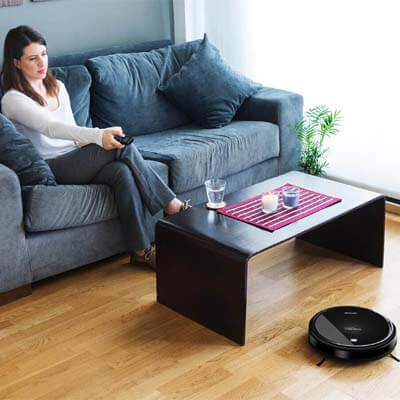
13. Autonomy
The autonomy of a robot is usually measured in minutes. 90 minutes, 120, 150… It is an important aspect, but In reality, what we should be interested in is how many square meters it is capable of cleaning, and that not only depends on the capacity of its battery, but also on the operation of its navigation system..
The more advanced the navigation system, the more it will be able to clean in the same time. Therefore, when comparing, both factors must be taken into account; If we have the autonomy information in square meters, much better.
14. Load and continue
This function, which is included in some high-end models, is related to the previous section. Some robots with room mapping are capable of knowing what they have cleaned and what they still need to clean., so if they run out of battery and haven't finished, they will go to the base and, once charged, resume cleaning where they left off.
Thus, in these cases, If the robot has this function, the autonomy it may have is no longer so important., since the robot will continue its work to finish it.

15. Dirt detection
This function, which some Roombas include (Dirt Detect), allows the robot to detect, thanks to its acoustic sensors, or a combination of optical and acoustic sensors, the areas where dirt accumulates, making more passes in those areas, to achieve better cleaning.
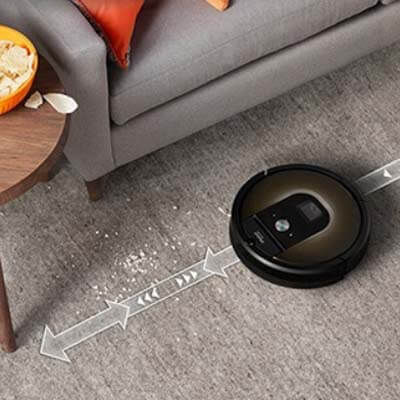
16. Full tank notice
Some robots may have an optical indicator to warn that the tank is full, or provide this information through the app. It is not a primary aspect, you simply have to empty the tank from time to time, but the fact is that some have it and others do not.
17. Maintenance
Although the robot basically works by itself, some work must be done periodically.
Emptying the tank
Emptying the tank is one of the most common tasks. Here The capacity of the tank is important, in liters. Normally, they are between 0,3 and 0,5 liters. Some robots have smaller tanks, which are a bit scarce; while, those that exceed 0,6 liters are good tanks, with capacity for several cleaning cycles.
Roomba has released an alternative in this sense, which for now is not provided by any other brand. Its most advanced models, i7 + y S9 + They include a tower-shaped base, to which the robot will empty itself automatically., and has a capacity for approximately 30 cleanings.

Thus, We can spend more or less a month without worrying about emptying (depending on how dirty there is and the frequency of cleaning), and it is also done hygienically., since it is stored in a bag, easy to collect, so that we do not have to come into contact with the dust.
Filter
Habitually, The filters will be cleaned every few days. Some are washable, although most are not.. It is an element that some manufacturers recommend changing every 3-6 months, although it can actually last longer.
Brushes
As we have already mentioned previously, it is an element to take into account, especially in homes with pets, people with long hair, or carpets. Some brushes tangle less than others (especially interesting are the rubber/silicone ones, like Roomba's AeroForce). Sometimes, it may be interesting to opt for a robot without a central brush.
Both the central brush and the sides should be cleaned regularly, to free them of hair and dirt, so that they can continue doing their job effectively.. As in the case of filters, it is sometimes recommended to change them every 3-6 months, although with good care they can last much longer.
18. Spare parts
In the case of both brushes and filters, it is possible that the robot includes a spare one, which is always good.
As well It is important to take into account the ease with which spare parts can be obtained, and the cost they may have.; Sometimes, we may see an attractive robot (usually some Chinese model of a more or less unknown brand) but for which it is difficult to obtain spare parts. It is important to take this into account and verify that they exist before deciding to purchase a robot.
19. Warranty and technical service
Warranty is an important aspect to consider. For purchases in Spain, the warranty will be two years (during the first six months, it is presumed that the failure is at origin), and in Internet purchases there is the right of withdrawal, so the item can be returned without further explanation, for 14 calendar days.
However, If we buy outside of Spain, it is possible that the guarantee is shorter (one year, for example) or that we may have more difficulties in exercising it or resolving any incident., both in relation to who to talk to, and in matters such as language, for example.

20. Brand
Another aspect that for some users will be more important than for others, but that represents a compendium of many others.
The most recognized brands on the market with a long history have earned respect for various reasons.: good product performance, good value for money, excellent quality, great customer service... If they are in a dominant position in the market, it must be for a reason.

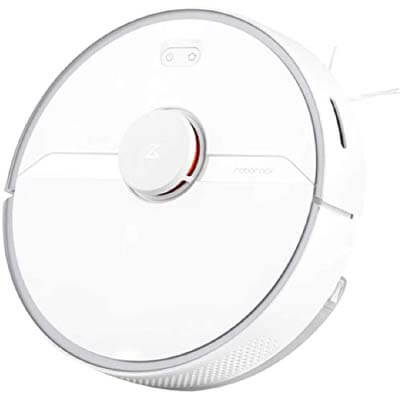
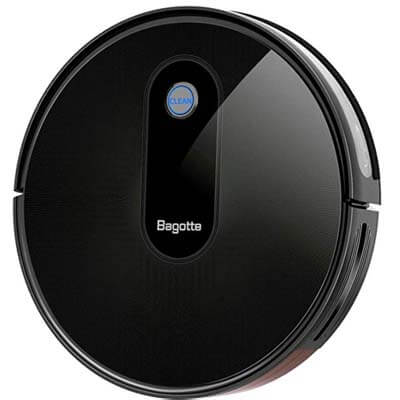
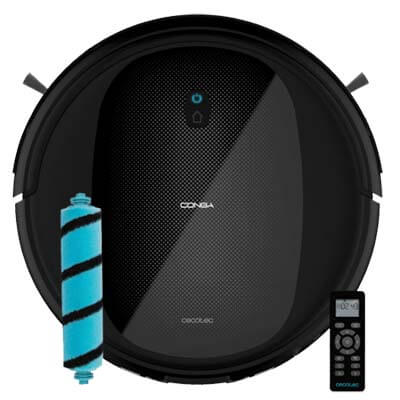
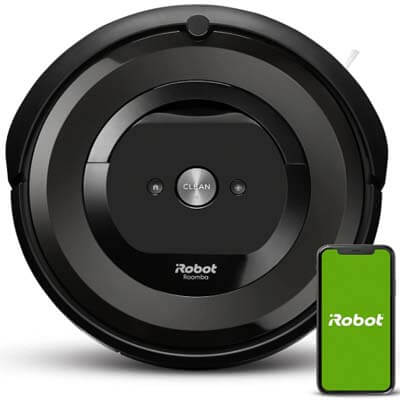
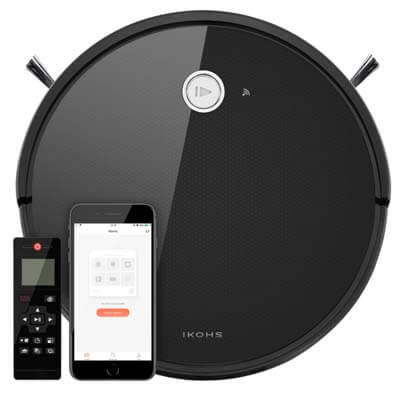
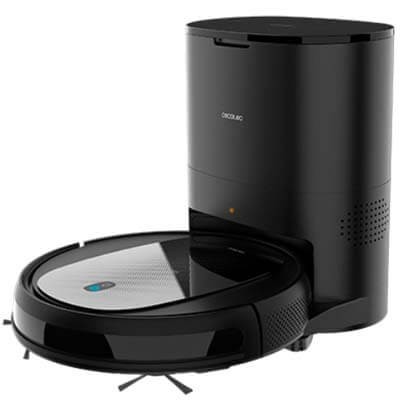
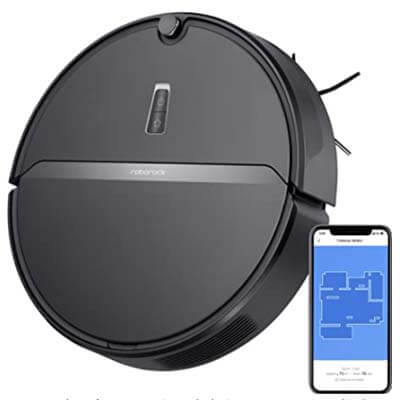


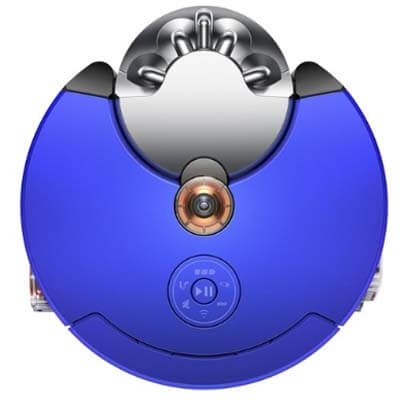
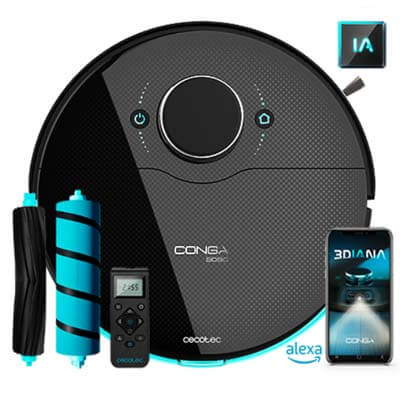
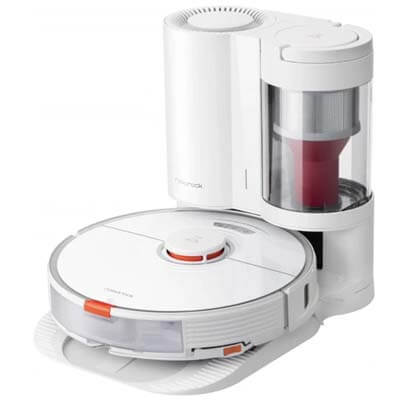
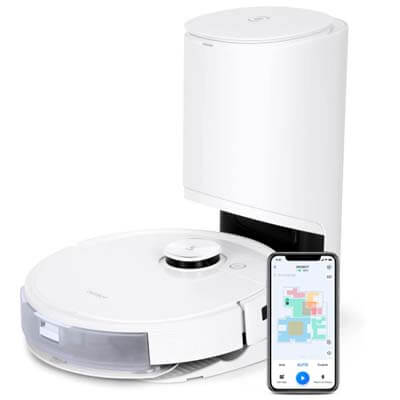
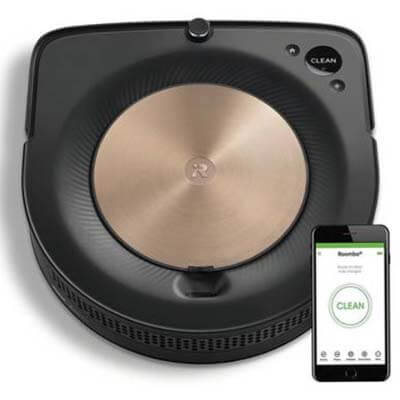


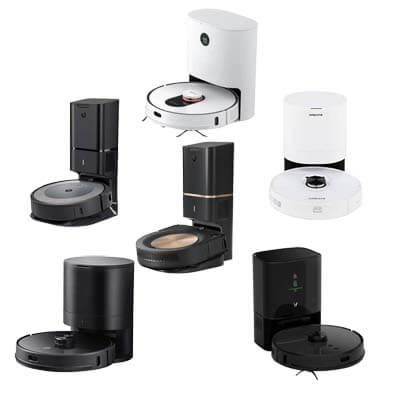
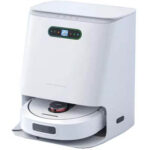

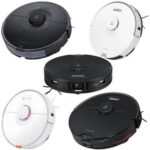
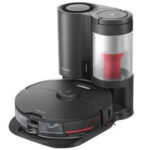
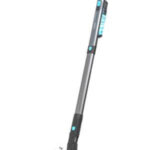
Hello!! First of all, thank you for this article, it is very useful,
Secondly, would you recommend the ROIDMI EVE PLUS 2700 Pa Black robot? I have found some inconsistency on Amazon, since the black one appears to have 3200 Pa in the description and more battery, but it is the same as the white one and I have not found that model anywhere else with 3200 Pa nor does it have any comments, there is only the of 2700 Pa.
Thanks, greetings
Hello Teresa, thank you for visiting us and for your kind words 🙂
The Roidmi Eve Plus has had a great reception since it came out, and we think it is a good alternative for features and quality-price. As far as we know, the power is 2.700 Pa, we are not aware of any other version with a different power.
All the best
Good afternoon. I have the Ikohs S18 model. It has two side brushes. The question is: the left necessarily has to go to the left side (L) and the right, to the right (R) or they can be exchanged, since I see that they are exactly the same. It would be another thing if they were blades.
Thank you very much.
Hello, Alberto, thank you for visiting us.
It is a good question, in this and some other brands there is a difference between the left and the right brush, and they are even marked with an R or an L, or in different colors, but apparently there are no differences between the two in terms of the angle. of the blades, the length or any other characteristic.
All the best